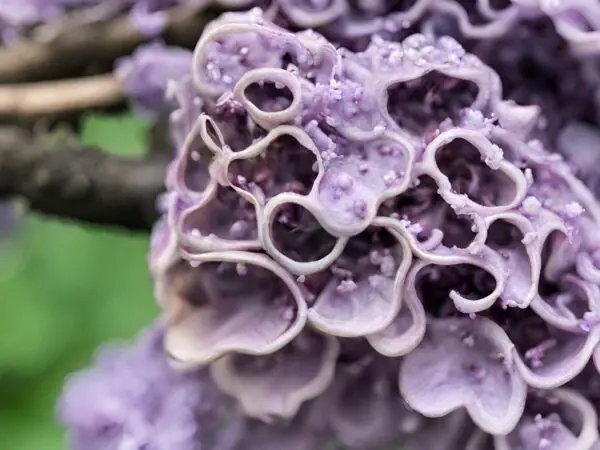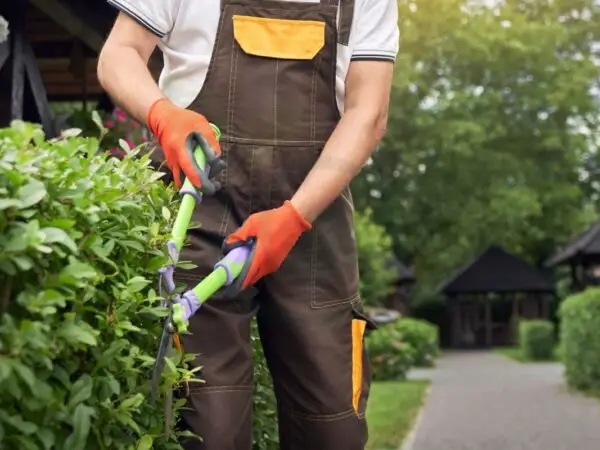
Transplanting a lilac bush can be a rewarding experience, revitalizing your garden with vibrant blooms and fresh scents. Whether you're relocating an established plant or starting anew, mastering the art of transplanting is key to ensuring its survival and thriving growth in its new home. While it may seem daunting, with the right guidance and care, you can successfully transplant your lilac bush and enjoy its beauty for years to come.
Key Takeaways
- Understand the specific needs of lilac bushes before transplanting to ensure successful relocation.
- Choose the optimal timing for transplanting, typically during the plant's dormant season in late fall or early spring.
- Prepare the new planting site by ensuring proper soil quality, sunlight exposure, and adequate spacing for the lilac bush to thrive.
- Provide pre-transplant care by watering the plant thoroughly a day before moving it to reduce stress.
- Follow a step-by-step transplanting process to minimize shock and maximize the lilac bush's chances of acclimating well.
- Implement post-transplant care practices such as regular watering, mulching, and monitoring for signs of stress to support the plant's recovery and growth.
Understanding Lilacs
Growth Habits
Lilacs develop strong root systems that anchor them securely in the ground, aiding their stability and longevity. These roots also help the plant thrive in well-drained soil, ensuring optimal growth conditions. Lilacs are known to produce vibrant blooms that add a burst of color and beauty to any garden or landscape.
Varieties
Common lilac and dwarf Korean lilac are two popular varieties known for their unique characteristics. While common lilacs are larger in size and come in a variety of flower colors, dwarf Korean lilacs are more compact and offer a different color palette. These variations provide various options for landscaping, allowing gardeners to choose based on their preferences and space constraints.
Bloom Time
Lilacs typically bloom in late spring to early summer, creating a stunning display of flowers that fill the air with a sweet and intoxicating fragrance. This bloom time is eagerly awaited by many gardening enthusiasts who appreciate the beauty and scent that lilacs bring to outdoor spaces. Moreover, these fragrant blooms attract important pollinators like butterflies and bees, contributing to the overall ecosystem health.
Assessing Transplant Needs
Reasons for Transplanting
Transplanting a lilac bush may be necessary due to poor growth conditions in its current location. Lilacs require well-draining soil and adequate sunlight to thrive, so moving them to a more suitable spot can promote healthier growth. enhancing garden aesthetics is a common reason for transplanting. By strategically relocating lilacs, you can create visually appealing landscapes and improve the overall look of your garden. Another reason for transplanting is to adjust to changes in sunlight exposure. If nearby trees have grown taller, casting more shade on the lilac bush, moving it to a sunnier area can help restore optimal growing conditions.
Signs of Stress
When a lilac bush experiences stress, it may exhibit various signs such as yellowing leaves. This discoloration could indicate issues with nutrient absorption or environmental stressors, prompting the need for transplantation. Stunted growth is another common sign that the lilac bush is under stress and may benefit from being moved to a more favorable location. Reduced flowering, despite proper care and maintenance, can also signal that the plant is struggling in its current environment and could benefit from being transplanted.
Optimal Transplant Timing
Seasonal Guide
Transplanting a lilac bush is most successful in spring when the plant is actively growing and can quickly establish roots. Avoid transplanting during extreme weather conditions like very hot summers or freezing winters. Consider the plant's dormancy period for a smooth and successful transplantation process.
Weather Conditions
Choose a calm, overcast day for transplanting, as this reduces stress on the lilac bush. Avoid transplanting during hot, sunny days to prevent excessive heat exposure. Monitor weather forecasts to ensure stable conditions for the lilac bush post-transplantation.
Preparing the New Site
Soil Requirements
Planting a lilac bush requires well-drained soil to prevent waterlogging and root rot. Amend the soil by incorporating compost to enhance nutrient levels and promote healthy growth. It's essential to maintain the soil pH at neutral levels to support optimal nutrient absorption.
Sunlight and Space
Lilac bushes thrive in locations with full sun exposure, ensuring they receive at least six hours of sunlight daily. Providing adequate space for root expansion is crucial for the plant's overall health and development. Avoid overcrowding the lilac bush with other plants to prevent competition for resources.
Pre-Transplant Care
Watering
After transplanting a lilac bush, keep the soil consistently moist to ensure its survival. Water deeply but infrequently to encourage root growth and development. Remember to avoid waterlogging the soil, as it can lead to root rot.
Pruning
Trim back any excess growth on the lilac bush before transplanting it to reduce stress on the plant. Remove any dead or damaged branches during the pruning process. This helps in promoting new growth after transplantation.
Transplanting Step-by-Step
Digging Up
When transplanting a lilac bush, dig out roots carefully to prevent damage and ensure a successful relocation. Preserve the integrity of the rootball to maintain the plant's health. By minimizing root disturbance, you increase the chances of a smooth transplantation process.
Root Preservation
- Handle roots delicately to avoid harm
- Maintain rootball structure for plant vitality
- Successful transplant requires minimal root disruption
Size of Clump
To ensure a successful lilac bush transplant, consider the size of the rootball. Including enough roots in the clump is crucial for plant survival. Maintain a balance between the mass of roots and the size of the plant for optimal growth post-transplantation.
Moving Process
When moving a lilac bush, remember to lift the plant with care to avoid any harm or stress. For larger plants, use a tarp to transport them safely without causing damage. Involving helpers when moving mature lilacs can make this process smoother and more efficient.
Replanting
Depth and Position
After digging up and moving your lilac bush, it's essential to replant it at the same depth as its original location. Ensuring that the root flare is at ground level promotes healthy growth. Positioning the plant centrally in the hole provides it with stability during its adjustment period.
Watering In
Once you have replanted your lilac bush, water it immediately after planting to help it settle into its new environment. Use water to settle the soil around the roots, ensuring there are no air pockets that could hinder growth. Thorough watering is essential for establishing your transplanted lilac successfully.
Post-Transplant Care
Initial Watering
After transplanting a lilac bush, provide ample water to help it establish in its new location. Monitor soil moisture levels regularly by checking the top few inches of soil. Adjust the watering frequency based on weather conditions, ensuring the plant receives adequate hydration.
Mulching
To promote healthy growth, apply mulch around the base of the plant post-transplantation. Maintain a 2-3 inch layer of mulch to insulate the roots and retain moisture. This practice also helps prevent weed growth and keeps the soil temperature consistent.
Fertilizing
For optimal growth, wait to fertilize until the following spring after transplanting. When choosing a fertilizer for lilacs, opt for a balanced formula. Apply fertilizer sparingly to avoid overfeeding the plant, which can lead to issues like nutrient imbalances.
Common Challenges
Root Shock
Transplanting a lilac bush often leads to root shock, causing issues like wilting or yellowing leaves. To address this, provide proper care and attention post-transplantation.
Pest Issues
Be vigilant for common pests such as aphids and borers after transplanting a lilac bush. Promptly treat pest infestations using organic or chemical methods based on the severity.
Ensuring Success
Growth Monitoring
Regularly check for new growth to ensure the lilac bush is thriving and adapting well to its new environment. Look for fresh leaves, buds, and shoots as signs of healthy growth. Monitor any changes in growth patterns closely.
Adjust care practices based on growth progress. If you notice slow or stunted growth, consider changing the watering frequency, sunlight exposure, or soil conditions. Tailoring care to the specific needs of the lilac bush can promote better overall health.
Monitor the overall plant health by inspecting leaves for discoloration, pests, or diseases regularly. Address any issues promptly to prevent them from affecting the plant's growth and development. Healthy plants are more likely to establish themselves successfully.
Seasonal Adjustments
Adapt care routines based on seasonal changes to support the lilac bush through different weather conditions. During winter, protect the plant from frost by covering it with a breathable fabric. In summer, provide ample water to combat heat stress.
Consider temperature fluctuations when caring for the lilac bush. Extreme temperatures can impact growth and flowering. Implement measures such as mulching around the base of the plant to regulate soil temperature and protect roots.
Modify watering and fertilizing schedules accordingly as seasons shift. In spring and summer, increase watering frequency to accommodate higher evaporation rates. Adjust fertilizer application based on the plant's growth stage and nutrient requirements.
Closing Thoughts
You now possess the essential know-how to successfully transplant a lilac bush. Understanding the plant's needs, timing your transplant correctly, and diligently following pre- and post-transplant care will set you up for success. Remember, attention to detail is key in ensuring your lilac thrives in its new home.
Now it's time to put your newfound knowledge into action. Get your hands dirty, follow the steps outlined, and watch your lilac bush flourish in its new environment. Share your experience with fellow gardeners and continue learning about caring for plants. Happy transplanting!
Frequently Asked Questions
Can I transplant a lilac bush at any time of the year?
Yes, it's best to transplant a lilac bush in early spring or late fall when it is dormant. This timing minimizes stress on the plant and increases the chances of successful transplantation.
How do I prepare the new site for transplanting a lilac bush?
Prepare a sunny location with well-draining soil. Dig a hole twice as wide as the root ball and mix in compost for nutrients. Ensure proper spacing from other plants for optimal growth.
What care does a lilac bush need after being transplanted?
Water the newly transplanted lilac bush regularly, especially during dry periods. Mulch around the base to retain moisture and suppress weeds. Avoid fertilizing immediately after transplanting to prevent stress.
What are common challenges when transplanting a lilac bush?
Common challenges include transplant shock, inadequate watering, improper planting depth, and lack of sunlight. Monitor the plant closely post-transplantation for signs of stress and address any issues promptly.
How can I ensure the success of transplanting my lilac bush?
Ensure success by choosing the right timing, preparing the new site adequately, providing proper care before and after transplanting, monitoring for any issues, and addressing them promptly. Following these steps will increase the likelihood of a successful transplantation.
Image Source: Paid image from CANVA





